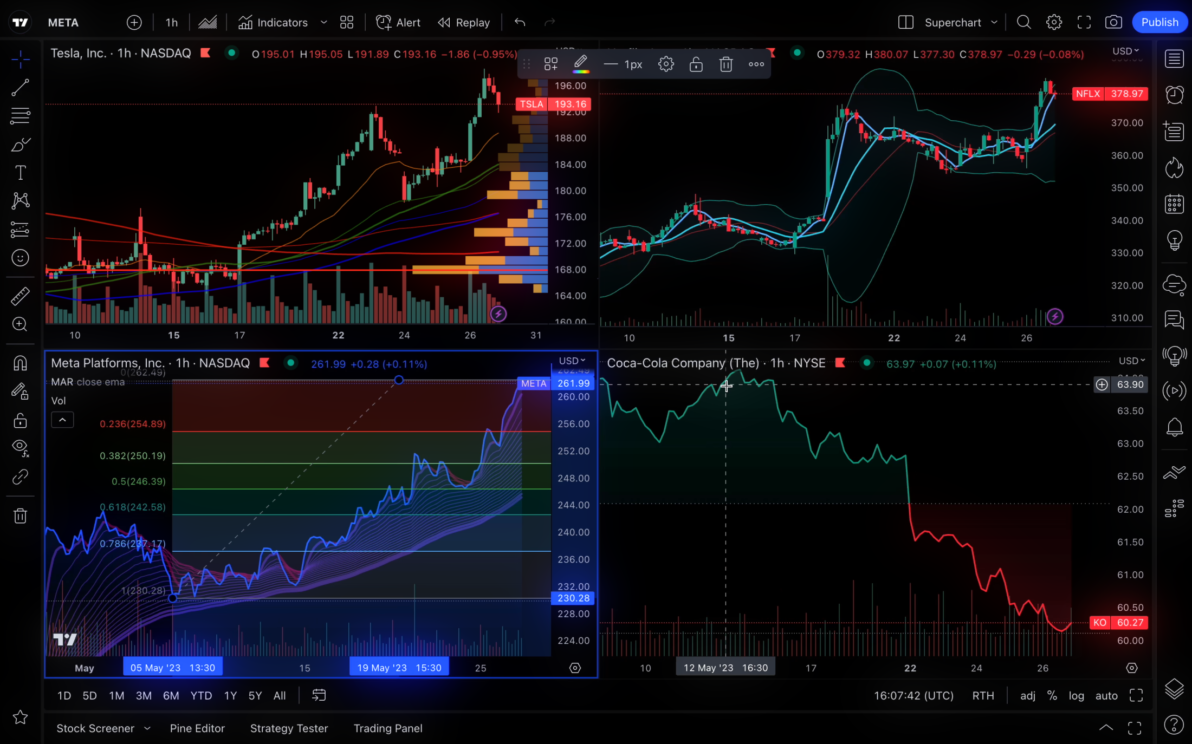Value Investing: Discovering Hidden Gems in the Market

Value Investing: Discovering Hidden Gems in the Market
Reading Time: ~9 minutes
Value investing revolves around uncovering stocks or assets that the market appears to have mispriced, akin to finding a solitary coin resting at what might be perceived as its lowest value, from which growth could occur. This approach often appeals to those who favor thorough research over market speculation, operating under the assumption that, over time, an undervalued asset will return to its true worth.
However, no strategy, including value investing, can guarantee positive financial outcomes. BrokerSuperMarket does not offer financial advice, emphasizing the inherent uncertainty within the market.
Value investing typically requires patience, discipline, and a willingness to examine a company’s or asset’s underlying fundamentals in detail. When successful, the results can be significant, as an undervalued security may experience substantial price appreciation once the broader market recognizes its true worth.
The following sections explore what value investing entails, why investors may consider it, how to implement it effectively, and the associated risks. A short case study illustrates both the potential rewards and the pitfalls of this approach.
Understanding Value Investing
What is Value Investing?
At its core, value investing involves purchasing securities that seem to trade below their intrinsic worth. This perceived undervaluation may stem from overreactions to market news, temporary setbacks, or general market pessimism.
Famous proponents include Warren Buffett, who has long advocated for purchasing solid companies at prices that offer a margin of safety relative to their underlying value.
Core Principles of Value Investing
- Margin of Safety: Acquiring securities at a notable discount from their estimated fair value to protect against errors in analysis or market volatility.
- Long-Term Focus: Allowing the market time to correct an asset’s underpricing, recognizing that short-term price movements can be driven by sentiment rather than fundamentals.
- Fundamental Analysis: Evaluating investments based on balance sheets, income statements, cash flow, and industry position rather than speculation or momentum-driven trends.
This philosophy contrasts with growth investing, which prioritizes companies expected to expand rapidly, even if their current valuation appears high.
A successful value investing strategy suggests that, eventually, price should converge with realistic value—but the timeline for that correction is inherently unpredictable.
Why Consider Value Investing?
- Potential for High Returns
Identifying genuinely undervalued companies or assets offers the chance for substantial profit if and when the market corrects its price.
This can be especially relevant in emerging markets or regions within Latin America, where stocks may trade at low valuations due to limited analyst coverage yet still possess strong fundamentals.
- Risk Mitigation
Prioritizing fundamentals and ensuring a margin of safety can reduce the likelihood of overpaying for an asset.
If research confirms that a company’s intrinsic value is higher than its market price, holding that security may provide greater confidence during market turbulence. However, misjudging an asset’s actual worth remains a possibility.
- Dividend Income
Many value stocks offer dividends while awaiting market price recovery. This feature may appeal to investors seeking not just price appreciation but also steady cash flow.
- Advantages for Latin American Investors
In Latin America, local stocks with strong fundamentals but low market valuations—perhaps due to currency fluctuations or limited visibility—may present outsized returns if economic conditions improve.
That said, currency risks and political instability must be considered in any analysis.
Practical Guide to Value Investing
- Research and Analysis
Start by analyzing a company’s financial statements, focusing on key metrics such as:
- Price-to-Earnings (P/E) Ratio
- Price-to-Book (P/B) Ratio
- Debt-to-Equity Ratio
Understanding industry trends and a company’s competitive advantages is also crucial.
BrokerSuperMarket provides comparison tools for evaluating brokerage platforms that offer research capabilities, though individual due diligence remains essential.
- Identifying Undervalued Assets
Look for companies whose share price lags behind their fundamental strengths, such as strong cash flow, durable brands, or valuable assets.
Latin American markets sometimes yield hidden gems, as some stocks trade cheaply due to local macroeconomic concerns. Distinguishing between temporary setbacks and structural weaknesses is key.
- Patience and Discipline
Value investing requires waiting months or even years for the broader market to recognize an asset’s true worth.
Setting clear entry points and reassessment thresholds helps guide decision-making, particularly when unexpected challenges arise.
- Diversification
Even when focused on undervalued securities, diversifying across:
- Different sectors
- Geographic regions
- Asset types
This approach can hedge against unforeseen industry downturns or currency movements, especially when investing both domestically and internationally.
- Monitoring and Reassessment
Once invested, continuously reassess the company’s fundamentals.
If the initial value thesis no longer holds—due to management changes, deteriorating financials, or shifting market trends—exiting the position may be prudent.
However, if the stock remains undervalued and fundamentals are intact, maintaining the investment might still be rational.
Case Study: Example of Successful Value Investing
Background
An investor purchases shares in a tech company at a time when its product pipeline seemed uncertain, and the market largely dismissed its prospects.
Despite negative sentiment, the investor recognizes robust financials and strong innovative capabilities overshadowed by short-term pessimism.
Performance
Over time, the company’s breakthroughs gain renewed consumer and media attention.
- Share prices rise dramatically, rewarding early investors.
- Dividends, if applicable, generate additional returns throughout the holding period.
Challenges
However, value traps exist—sometimes, a low price reflects fundamental business weaknesses or poor governance.
Distinguishing genuine bargains from failing companies requires rigorous analysis.
Key Takeaways from the Case Study
- Timing is crucial in value investing:
- The tech company transitioned from being undervalued to gaining market recognition for its innovation.
- Patience allowed the market to adjust its perception and reflect the company’s true value.
- Distinguishing between an opportunity and a value trap:
- Not all low-priced stocks represent good investments; some may reflect fundamental weaknesses.
- A thorough analysis of financials, competitive positioning, and business strategy is essential to avoid costly mistakes.
- The role of dividends in investment returns:
- Beyond capital appreciation, dividends can provide regular income throughout the investment period.
- This can make an investment attractive even before the market fully corrects its valuation.
- The importance of flexibility and continuous monitoring:
- While the investor correctly identified the company’s potential, ongoing assessment of its fundamentals ensured informed decision-making at every stage.
- Adapting to changing market conditions can be the difference between seizing an opportunity and being stuck in an underperforming investment.
This case study highlights how value investing requires patience and a disciplined approach, while also demanding the ability to separate short-term hurdles from deeper structural flaws.
Risks and Limitations
- Value Traps: An undervalued stock may remain cheap for valid reasons, such as a failing business model.
- Market Timing: The market may take longer than expected to recognize an asset’s true value—if it ever does.
- Effort-Intensive: Successful value investing demands thorough research, including financial reports, industry trends, and macroeconomic analysis.
- No Guarantees: BrokerSuperMarket does not provide personalized advice or ensure profits, as market behavior can defy rational expectations indefinitely.
Conclusion
Value investing seeks overlooked assets with strong fundamentals, requiring thorough research, patience, and sometimes a contrarian mindset.
While the strategy aims to limit downside risk through a margin of safety, no outcome is assured.
Disclaimer: BrokerSuperMarket’s tools can help compare platforms that facilitate value-focused investing, but individual diligence, professional advice, and realistic expectations remain crucial when navigating market uncertainties.
February 14, 2025 05:07:00am
TradingView is a highly popular financial charting platform that caters to trade...
September 07, 2024 18:19:52pm
The energy industry remains crucial to the global economy, with traditional sect...







 en
en es
es